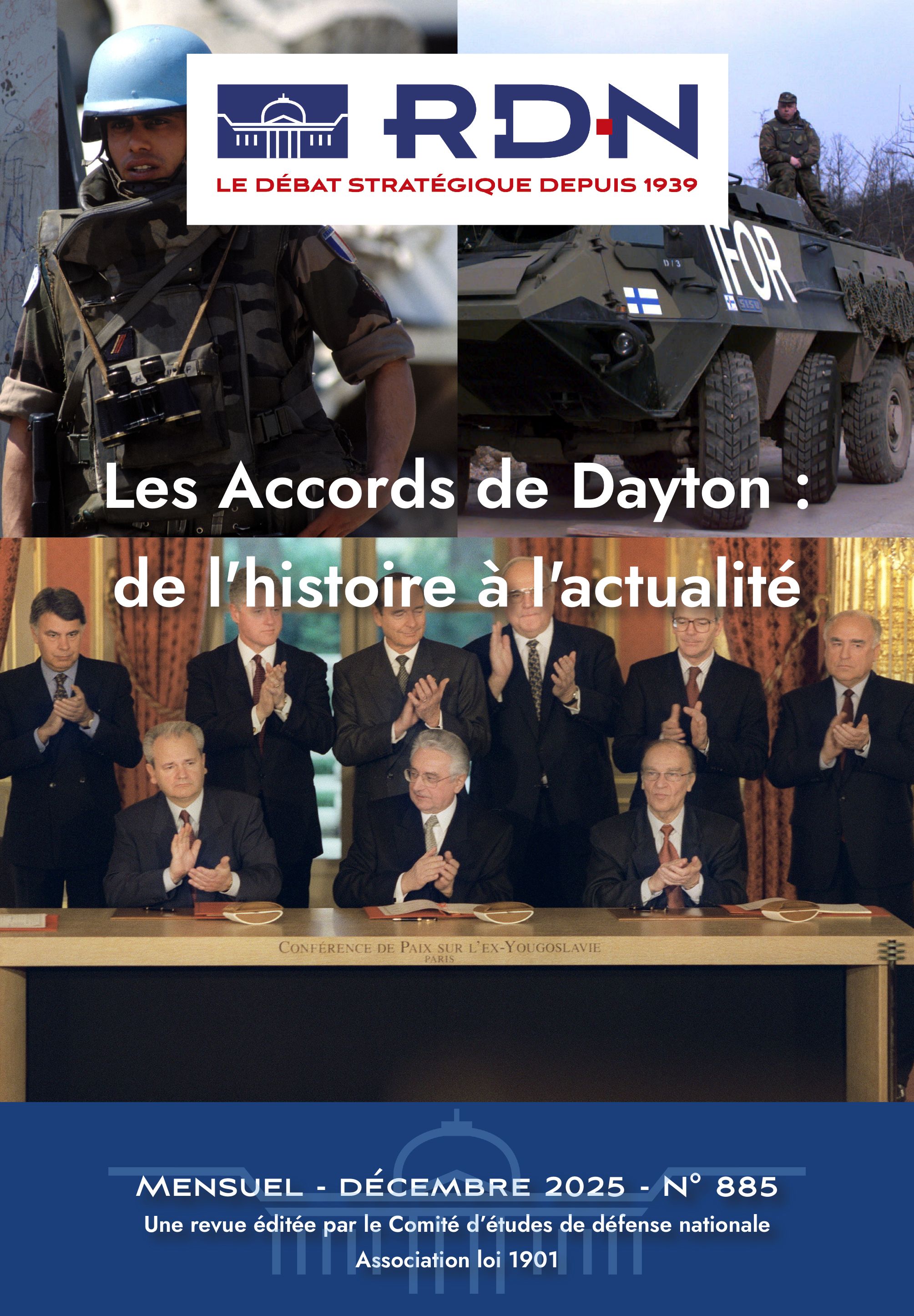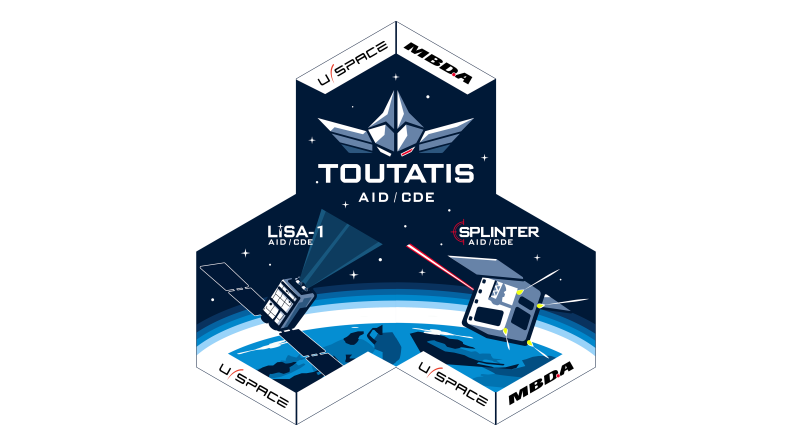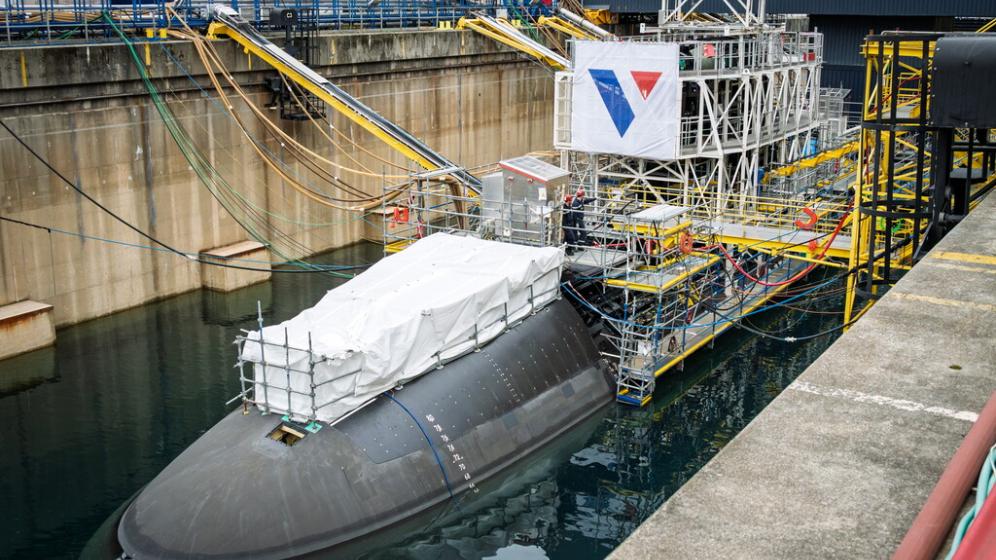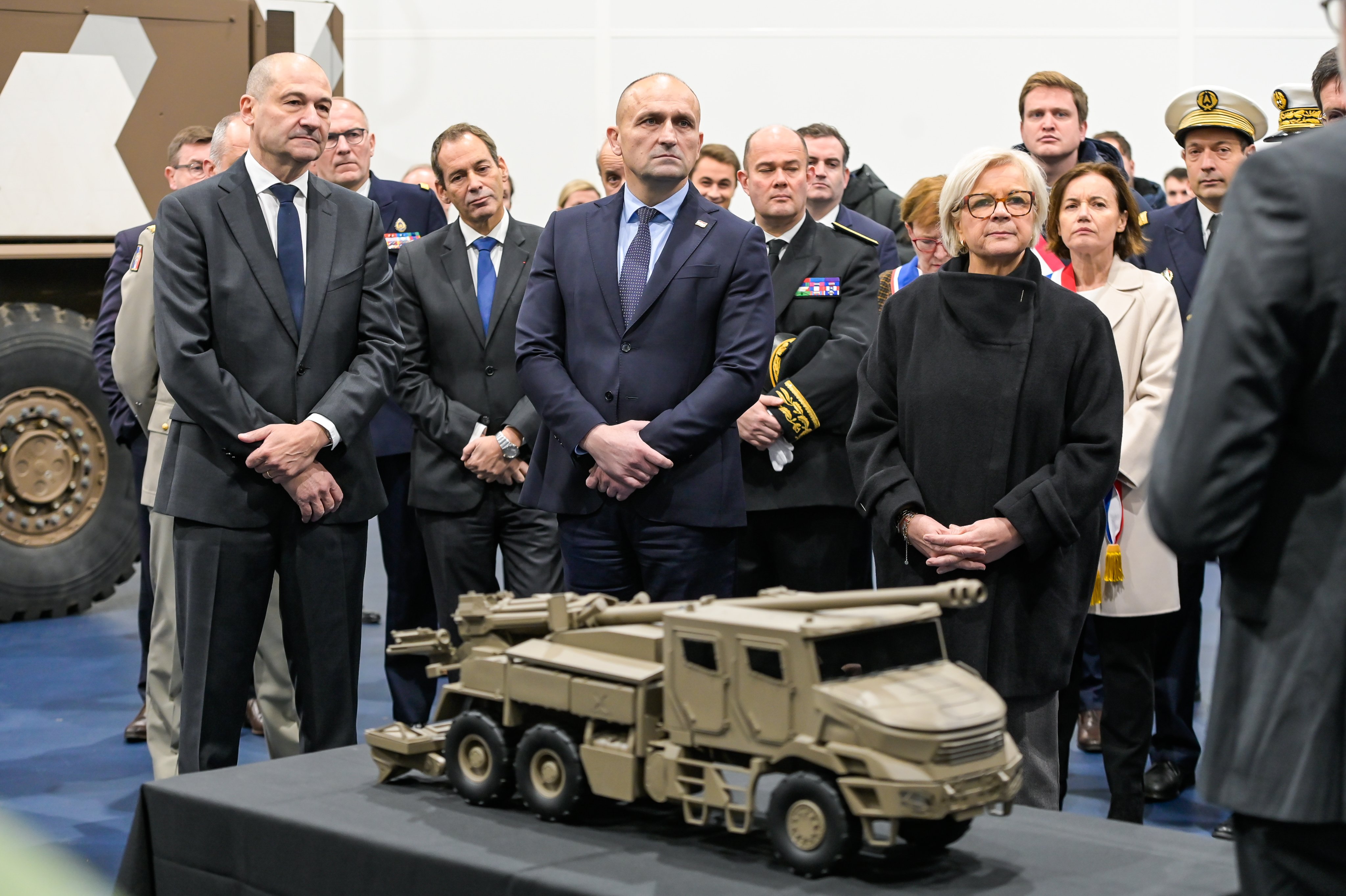French command and control (C2) is now an essential element of air defence of the homeland, and of external operations. In tracing the history of C2 from the very beginning of air operations through to the latest developments, this article highlights one of the fundamental capabilities of the French Air Force.
French Command and Control of Air Defense - a Brief History
Fifty years of effort have made the French system for command and control of air operations (C2 Air) the nerve centre of air operations and as such it is central to French air power. C2 Air brings together the command structure, organisation, processes and technical and human resources which allow it to command, plan, programme and conduct air operations above, from or beyond national territory.
The history of C2 in France is intimately linked to the history of air defence of the territory and the means of detection, command and control that go with it. The basic principles of how C2 operates flow naturally from the way air power is used.
Genesis of C2: from invention of the principles to the birth of modern C2
The First World War and the emergence of the first C2-type organisation
During the Great War, the first passive defence measures, against the Zeppelins and Gotha bombers that threatened Paris, led to the establishment of an organisation tasked with centralising through telephone messages information coming from watchtowers and from acoustic detection systems, with analysing it and then deciding what needed to be done. As a result, the fortified camp in Paris, which had been set up by the military governor of Paris in 1914, received anti-air defence equipment and fighter squadrons. This organisation lasted throughout the entire war. Further east, confronted by the huge German offensive around Verdun, the French command advanced the principle of mass use of aviation to regain the advantage. The objective was to win and retain mastery of the air above the theatre of operations by coordinated use of all air assets present there. After the success of this move, an initial structure, the air division, was created in 1918 to coordinate all combat aviation action on the Eastern Front.
Birth of modern C2 during the Battle of Britain
Despite these initial measures, C2 as we currently recognise it really took off in 1940, during the Battle of Britain, at the start of the Second World War. In the face of the Luftwaffe’s bombing offensive, the Royal Air Force established the modern fundamental principles of how C2 should operate. They relied at first on the detection capabilities of the Chain Home coastal radar chain, from which were established the bearings of incoming attacks and the approximate number of enemy aircraft. This information was then centralised and analysed in the operations centre of Fighter Command, which passed intercept axes and areas to cover to the combat aircraft units. The key to Fighter Command’s success lay in the speed of information handling and promptness with which the air bases launched their fighter aircraft. This process corresponded to the OODA loop (Observation, Orientation, Decision, Action), which was conceptualised decades later by the American John Boyd.
Thus from the First World War, and in particular from the Battle of Verdun, there was coordinated use of air assets. The guiding principles of coordination of air assets were then brought up to date with centralised command and decentralised execution.
In 1940, the Battle of Britain illustrated the importance of C2 in successful military operations, and indeed Fighter Command’s organisation set up in the Battle of Britain was the birth of modern C2 in the sense of bringing together the different components (surveillance radar, air observers and fighter aircraft units) in a single network under a single command which centralised information and planned operations.
Construction of a national capability post-World War Two
Management of ground and air assets (air defence, radar, and air bases) used in air operations has been in constant development since the Second World War. This evolution has followed the increasing complexity of equipment, the greater number of units to manage and the geographical areas that it has been necessary to keep under surveillance. Throughout the decades following the end of the war, the development of C2 has been carried along by numerous technological advances, among which figure the arrival of jet aircraft, the technological developments made in detection systems in both range and discrimination capability, the exponential growth in information technology, and the improvement in communications as a spinoff from the continual modernisation of electronic components.
C2 in France reached a major turning point with the creation of NATO and the emergence of an adversary with a vast range of air and ground assets at his disposal. The establishment of modern French C2 has to be seen in relation to the development of the French Air Force’s air defence role. Once equipped with radar supplied by the British, at the end of the nineteen-forties the Air Force took its first step, in in setting up its operations centre on the RAF model in the centre of Paris, in the basement of the mobile guards’ barracks on Place de la République. In 1957, a new site became available in Taverny, which became the air defence operations centre (Centre des opérations de la défense aérienne – CODA, in the north-western suburbs of Paris). In view of the necessary reactivity that this task imposes, a single command was essential and in 1961 the Air Force created a centralised structure dedicated to air defence, the air defence forces air command (Commandement air des forces de défense aérienne – CAFDA), still in Taverny. This brought together all the assets, from the sensor and detection network to the interceptor aircraft, thereby offering real-time information on a situation to the Prime Minister, who is the political authority responsible for air defence of the country. This highly reactive chain linked the highest authority of the state to the pilot in his aircraft, and ensured sovereignty of national airspace everywhere and in all circumstances. Air defence areas and their commanders were defined in 1965: in addition to his HQ, each had a regional C2 with its operations centre, detection and control equipment and the associated interceptors.
At the time, French C2 was undergoing considerable modernisation of its detection and air control assets. The radar stations were being modernised and fitted with the Cesar semi-automatic radar system (complexe d’exploitation semi-automatique du radar) and the Strida II air defence communications and display system (Système de transmission et de représentation des informations de défense aérienne). Introduction of Strida in 1960 was a major step forward in C2, and the general modernisation continued throughout the following decades. In parallel with all this, the Air Force adopted the concepts of use common to other NATO air forces and integrated the NADGE network (NATO Air Defense Ground Environment). In doing so, the Air Force could thereafter exchange information, and maintain permanent liaison with NATO structures, thereby gaining access to information which allowed an overview of the general air situation on approaches to mainland France. The challenge for French C2 was to obtain overall aerial cover of the homeland, fused together to give a single picture of its airspace. Despite France’s exit from the NATO Integrated Military Structure in 1966, the Air Force retained its connection to NADGE. Furthermore, in a similar fashion to the Tiger Meet exercises, French Air Force units kept up their training with Alliance partners, particularly in the field of C2, through organising simulated air missions. The permanent French C2 architecture remained until the beginning of the nineteen-nineties and the creation of the air defence and air operations command (Commandement de la défense aérienne et des opérations aériennes – CDAOA) in 1994. Air defence assets have continued to develop through successive modernisations and the entry into service of new equipment, such as the E-3F AWACS at the end of the nineteen-eighties.
French C2 Air: robust and interoperable
Developments in the concept and capability of French C2 Air
The start of the nineteen-nineties saw two major developments: the end of the Cold War encouraged a more expeditionary posture, symbolised by the Gulf war, and consequently increased use of C2 in external operations; and considerable progress in information and communication technologies led to the arrival of the concept of network-centric warfare.
The years following the end of the Cold War were particularly good for French C2. First, the Air Force received E-3F AWACS airborne warning and command system, which gave much greater scope, particularly in external interventions. Thereafter, the lessons learned from the Gulf War hammered home the need for effective systems of command, control, communication and intelligence (C3I) in any modern war situation. In adapting itself to this new environment, in1994 the Air Force brought its competence and systems for dealing with external operations alongside the existing structure in mainland France, to create the CDAOA. Over and above its air defence tasking, CDAOA maintains and develops the Air Force’s expertise in commanding air operations.
With regard to capability, these developments led to the launch in 1993 of the system for command and control of air (now aerospace) operations (SCCOA), into which Strida was incorporated, thus networking together all players involved in aerospace operations. SCCOA has become the backbone of the deployment of French air assets. The programme was started in parallel with NATO’s Air Command and Control System (ACCS), which brings together all member countries’ systems for conduct of air operations, including that of France. SCCOA’s task is to:
- Ensure the permanent deterrent missions and protection of national territory without any interruption;
- Allow all military air assets to conduct their missions 24 hours per day, in national airspace and in complete security;
- Provide for the long-term deployment of one hundred combat aircraft in three in-theatre air bases;
- Provide the air transport, surveillance and in-flight refuelling assets that are operationally necessary to supporting the deployment of forces;
- Take on, if needed, the role of lead nation for command of the coalition air component, and ensuring its participation at the in-theatre joint command level.
The development of SCCOA was just one step in a series of steps. Currently, SCCOA is beginning stage 4, which will see the move from separate command and control centres to a NATO integrated ACCS structure. Its development has followed the transformation of the French armed forces, and is aimed at providing a mechanism that is capable of covering the entire spectrum of aerospace operations and adapting to changes in them.
Henceforth, the SCCOA should be thought of as a tool which allows independence of decision-making and action in air operations. At the time of the Iraq war in 1991, French structures were ill-adapted to the conduct of a coalition air operation, and there was a necessary dependence on coalition command structures. Twenty years later, during operation Unified Protector, the C2 Air capability allowed France to conduct the first strikes on 19 March 2011, whose political and strategic impact was a determining factor in the success of the operation.
Current C2 Air
Today, France has high performance C2 Air, which is robust and interoperable. From both fixed and deployable structures t allows command, planning, programming and conduct of air operations over, from, and even outside national territory. The French C2 Air can be divided into two major functional groups: permanent C2 Air and expeditionary C2 Air. The permanent group provides for the conduct of a wide range of air missions over national territory, while the expeditionary C2 concerns itself with the conduct of external air operations, be they directed from C2 structures in France or overseas. French C2 Air can be set out as follows:
 air protection
air protection- space surveillance and anti-missile defence permanent C2 Air
- operations on national territory
 external air operations
external air operations
- external operations conducted from the homeland
- external operations conducted from structures expeditionary C2 Air
outside the homeland
The primary mission of the permanent C2 Air is surveillance and protection of national skies: it relies on the command and control structure of the national air operations centre (Centre national des opérations aériennes – CNOA), and French capability in this field recognised as robust. The French system for air security provides for the surveillance of some 11,000 air movements daily over our soil.
Since the 11 September 2001, the C2 system for air defence of national airspace has been focused on the terrorist threat. A consequence of this has been the exceptional need for a greater level of inter-ministerial work. The presence within CNOA, of representatives of the various ministries improves the flow of operations, and their interface role improves inter-ministerial synergy. Everyone involved in the fight against terrorism is therefore integrated into the same information loop. In parallel with this, there have been efforts towards better cooperation between countries. France has signed bilateral agreements with bordering countries with the aim of achieving earlier warning and more effective action against threats.
The kinds of operation that permanent C2 Air has supported include long-range raids, in-country training of air forces, and public service missions. Permanent C2 Air gives France the ability to conduct long-range conventional strikes: for example, France is now capable of projecting a patrol of Rafales carrying Scalp cruise missiles, in company with air-to-air refuelling tankers and an AWACS, all fitted with long-range communications, in order to command a cruise missile strike from COAIR or from Lyon. This unique capability affords the political decision-makers the ability to deliver precision military effects anywhere, and in just a few hours, with a very small–or even no–ground footprint.
Permanent C2 Air allows the mounting of many public service missions which require coordination of the use of civil and military assets, such as security of the skies, search and rescue of aircraft in distress, fighting illegal activity such as drugs trafficking, fighting forest fires and assistance to populations following natural disasters.
CDAOA also conducts the space surveillance mission, and directs employment of the large space watch network (Grand réseau adapté à la veille spatiale – Graves). The data obtained from it is analysed and regularly updated to build a space picture. Improvements to GRAVES are planned for the near future, as well as the development of a demonstrator for spectral observation and characterisation of geostationary satellites (Observation spectrale et caractérisation des satellites géostationnaires – Oscégéane), which will perform spectroscopy on geostationary satellites. The coordinated setting to work of these sensors and their associated software highlights the existence of spatial operational loop of Detection (1) – Analysis (2) – Orientation (3) – Action (4), which is essentially the OODA loop in a different disguise.
Since February 2010, a secure defence communications line has been established between CNES, a centre of expertise, and CDAOA, the operational authority. This has led to the establishment of a space centre that is planned for the Lyon Mont-Verdun air base, and which will be able to give a very precise daily situation by merging the information coming from all sensors. This future operational centre for military surveillance of spatial objects (Centre opérationnel de surveillance militaire des objets spatiaux – Cosmos) will therefore be a centre for real space-orientated C2.
Many years of dedicated work has given France a permanent C2 Air capability that enables the country to ensure the overarching mission of protection of national airspace and at the same time to conduct other missions of highly diverse nature. ♦







